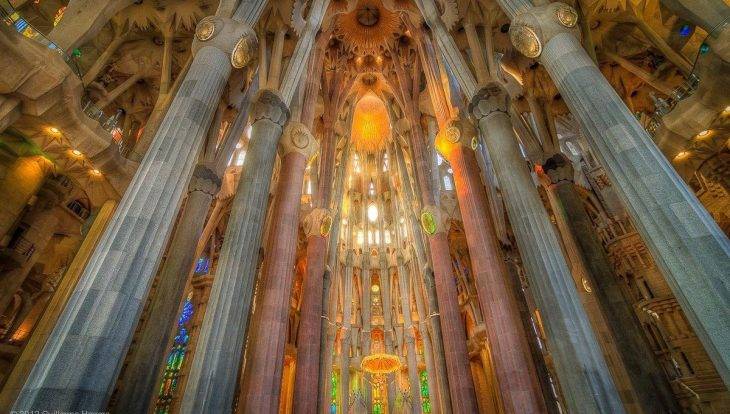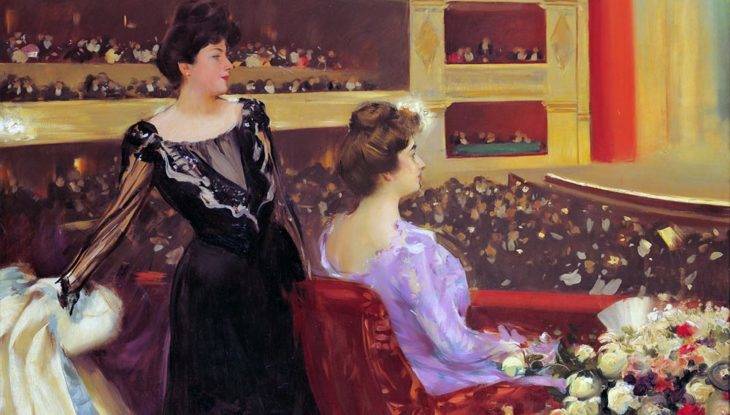5 reasons to visit Barcelona in November, December or January

Barcelona is a fabulous place to visit in November, December and January. The weather is usually sunny, and as you’ll see from the photo below, the tourist crowds will have left for the year. There’s still plenty to do, though, and the city is still brimming with life!
Low, low prices
The price of flights and hotels falls dramatically during the months of November, December and January. Come February, the Mobile World Congress brings the prices right up to summer levels!
Immerse yourself in culture

You can’t visit Barcelona without seeing the key sights:
The winter months offer a great opportunity to visit these extraordinary places without the crowds they attract in July and August. You’ll have more time and more space to truly appreciate their unique nature.
Many temporary exhibitions are also held during this period
We invite you to take a look at our planning of cultural events this winter in Barcelona.

CaixaForum, this splendid modernist cultural center, hosts a superb Opera exhibition. More info here.
Discover the festive season, Catalan-style
Christmas is celebrated in a fairly similar way in most Western countries. However, there are a few traditions which are specific to Spain and/or to Catalonia which you may not have heard of.
Catalan Christmas characters
In Catalonia, Santa Claus doesn’t grab all the attention at Christmas! There are more important local figures:
El Caganer
In any traditional Catalan nativity scene, you’ll find a little figure called the Caganer, in addition to Mary, Joseph, baby Jesus and the other usual suspects.
This little man is rather unusual, as he’s busy… defecating. Not particularly romantic, no, but extremely traditional in Catalonia – his origins are shrouded in the mists of time. Nowadays, Caganers are also used satirically to parody politicians or other public figures, and you’ll be able to spot them at all of the Christmas markets.
El Tió de Nadal
El Ti
ó de Nadal is another character from Catalan folklore. Originally, the Tió was a log, destined to provide warmth and light for a household. Nowadays, it takes the form of a stylised, hollow log, representing a smiling figure with a red hat.
At Christmas, the Tió de Nadal is beaten whilst singing a song about Caga Tió (the character’s nickname) in order to release sweets hidden inside it. (The Tió is said to “poo” the gifts – is there a theme developing here?)
The Feast of the Holy Innocents
28th December is the Feast of the Holy Innocents. It’s not a big celebration, but traditionally, it’s celebrated in the same way as 1st April: children cut out small paper figures, which they then attempt to stick on people’s backs. There’s also a tradition of jokes and trickery, which the media join in with whole-heartedly!
Epiphany (Feast of the Kings)
In Spain, children receive gifts on the Feast of the Epiphany, to celebrate the wise men bringing presents to baby Jesus. For the Spanish, 6th January is actually a bigger deal than 25th December.
On the evening of 5th January, Barcelona welcomes a procession of kings. They arrive at the port by boat, before climbing onto their cart and handing out sweets to waiting children. If you’re visiting the city as a family, make sure you go!
Enjoy seasonal treats
In early November, bakeries fill their shelves with panellets, sweet treats made from marzipan and pine kernels which are traditionally served on the Feast of All Saints (1st November).
The other stars of the culinary show in November are chestnuts and sweet potatoes, which you’ll find served in a variety of forms.
The Christmas meal begins with a soup made from chunky pasta, meat and vegetables. Next comes the turkey or capon, stuffed with raisins and pine kernels. The meal ends with touron, a form of nougat. Want to try some? Take a look at our list of the best places to buy handmade touron.
- If you’re in Barcelona for Christmas, see our list of restaurants offering a Christmas menu.
- On 6th January, people eat a form of “king cake”: a circular cake made with almonds, dried fruit and pine kernels, with a charm hidden inside for one lucky participant.
Christmas markets and January sales
December and January are particularly good for shopping:
- The Fira Santa Llucía is the big Christmas market held each year on the esplanade in front of the cathedral. You’ll be able to find figurines (including the Caganer and the Tió de Nadal), Christmas decorations, and all manner of handmade articles. For more information, see our article on Barcelona’s Christmas markets.
- The sales in Barcelona start on 7th January 2020 and go on until the 6th of March – and there are plenty of bargains to be had!
Have fun!




